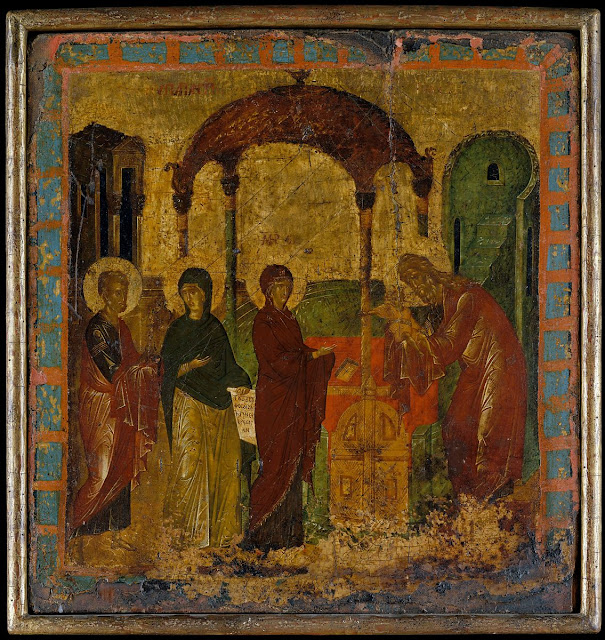Pintor anónimo bizantino, La presentación en el
templo (S. XV),
icono al temple con fondo de oro de hoja (44.5 x 42.2cm),
Metropolitan
Museum (New York).
...
En el templo entra María,
más que nunca pura y blanca,
luces del mármol arranca,
reflejos al oro envía.
Va el Cordero entre la nieve,
la Virgen nevando al Niño,
nevando a puro cariño
este blanco vellón leve.
Las dos tórtolas que ofrece
ya vuelan y ya se posan.
Ana y Simeón rebosan
gozo del tiempo que crece,
que estalla, que está; no hubo
quien, viendo al blanco alhelí,
dijera, -por ti, por mí-
que al hielo esta noche estuvo.
Ya ha cesado la nevada;
y el Niño, tan blanco, blanco,
oye que va a ser el blanco
de contradicción, la espada,
ay, para su Madre, y mueve
hacia ella sus ojuelos,
regalando desconsuelos,
como si él no fuera nieve.
Gloria al Padre, gloria al Hijo,
gloria al Espíritu Santo,
por los siglos de los siglos. Amén •
Himno del Oficio de Laudes de la Liturgia de las
Horas
Para la fiesta de la Presentación del Señor.










